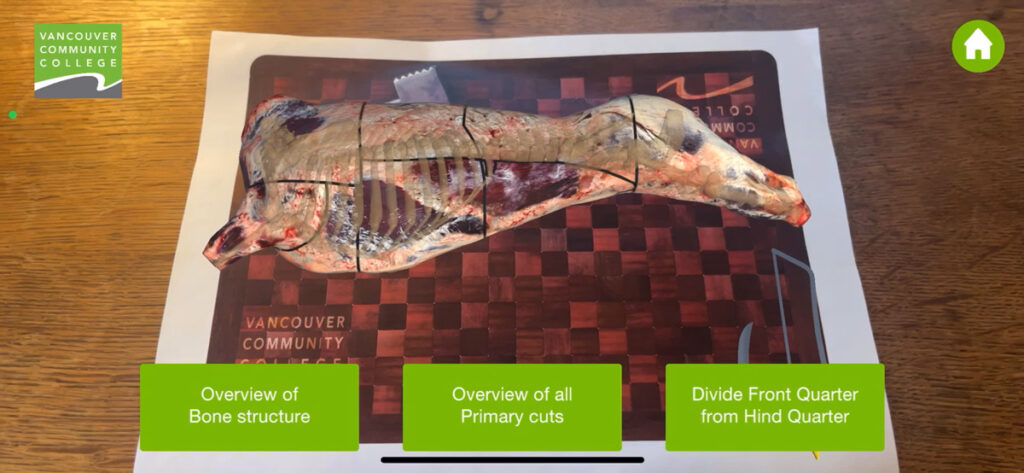So why was learning butchery so suited to AR?
Subject matter – learning by doing
As we mentioned earlier, the complex nature of the subject makes it both hard to teach and for students to retain. However this is also why it’s perfectly suited for AR.
While the topic of butchery would be extremely intense in virtual reality, especially for students new to the subject, AR bridges this gap by being far more interactive than a textbook or lecture, while also not being too overwhelming or isolating as many find VR to be.
In the AR app the user goes through the dividing lines for the primary cuts in a way they wouldn’t be able to practise through textbook learning. The interaction with the realistic models surpasses what would be possible through a website, and most other e-learning or traditional formats wouldn’t have the same ability to explore the cuts and the models as closely as what the app was able to replicate.
This interactivity is key to the education within the app, as time and time again, interaction has been proven to be the source of high retention rates in e-learning. The app not only champions this interactivity, it applies it to the lesson being taught – the dividing lines for the primary cuts, their secondary cuts and the bone structure.
Testing the user
The versatility of AR also meant it was easy to include a quiz for the users to be able to test their knowledge of what they’d learnt. Including a quiz means that the students could use the app to revise, then test themselves on what they’d learnt to identify areas that need more attention.
Having a quiz such as this one is something that we have incorporated in to many of our e-learning projects as it is consistently a great way to enhance interactivity, as well as helping users monitor their progress. If you’re looking for an e-learning solution that maximises retention and engagement, AR or otherwise, get in touch so we can create something perfect for you.
Accessibility
One of the key aspects of AR that sets it apart from VR is its accessibility. Unlike VR, there is no need for a headset or any specialised devices. AR can be made in to an app and installed on any device with a camera such as phones or tablets, its even possible to have AR launch from a web browser.
For the AR butchery app, this was one of the key reasons AR worked so well. The goal for the app was to be a resource alongside the lecturers and practical work, something the students could use to revise whenever needed, or use in lectures to support teaching. Therefore the students had to have easy access to the app, through either their own devices, or for it to be readily available on the college’s tablets.
The app being on tablets and phones also means that it can be explored collaboratively. Whether guided by staff at the college, or worked through in student groups, viewing the app together meant that the learning wouldn’t have to be done in isolation – a challenge that VR often presents










